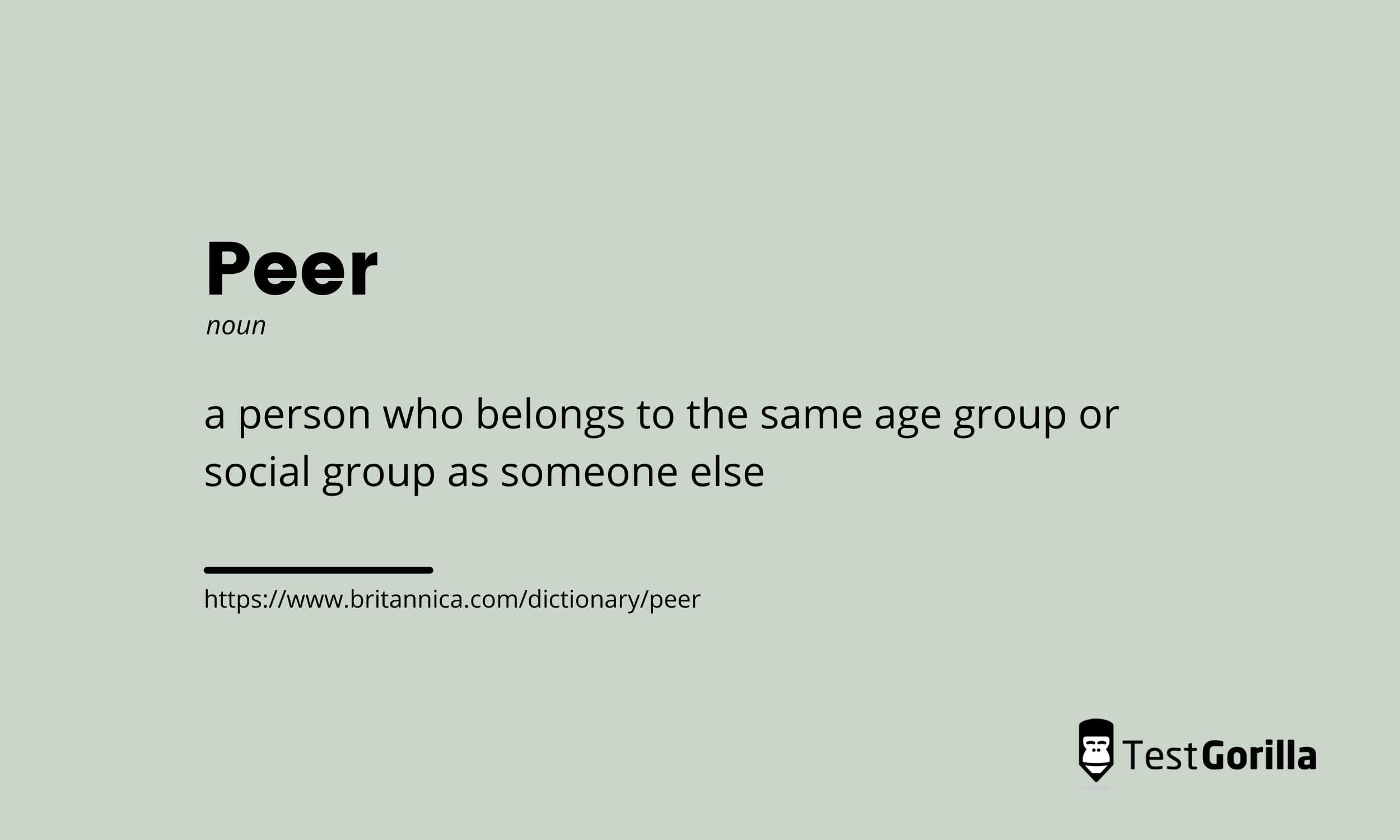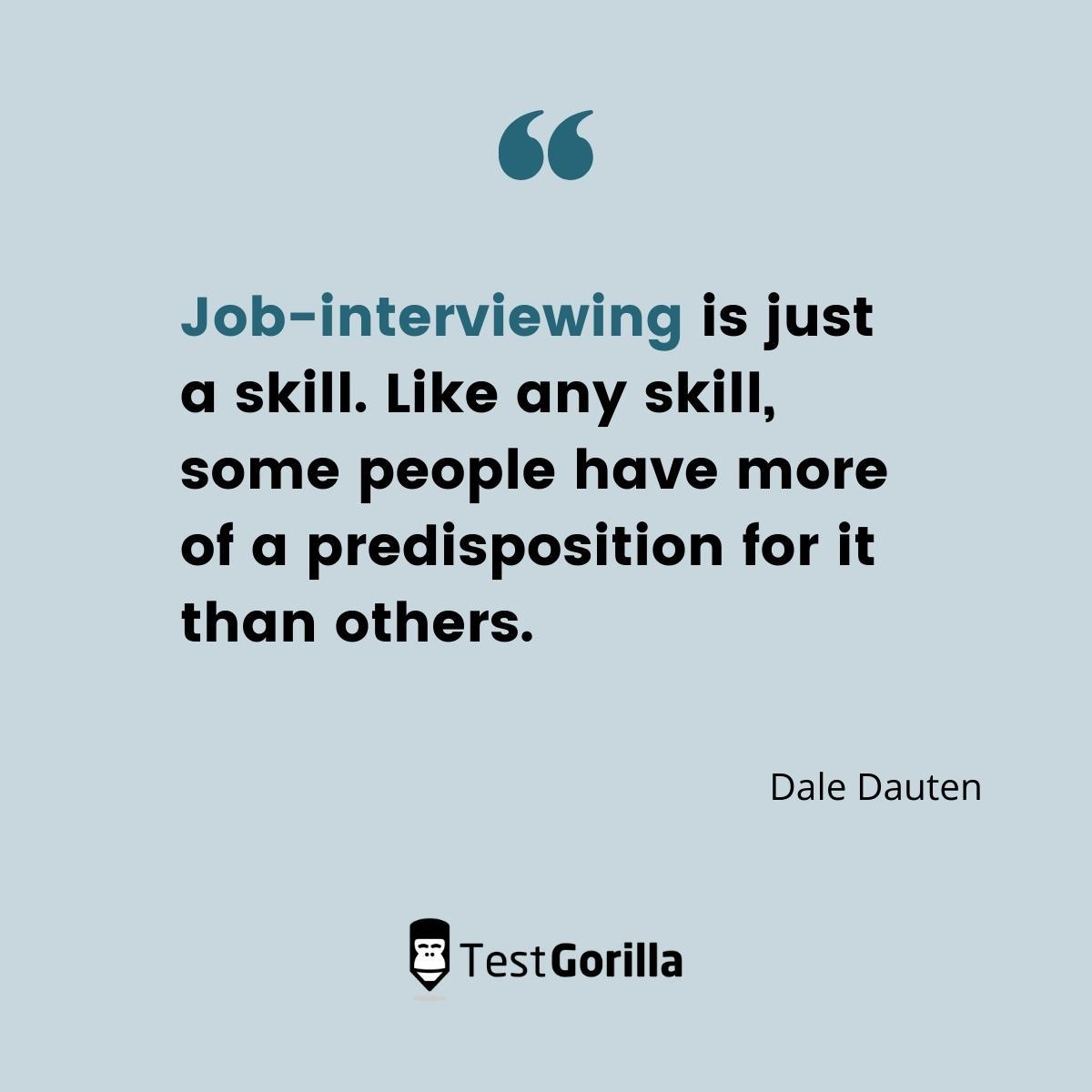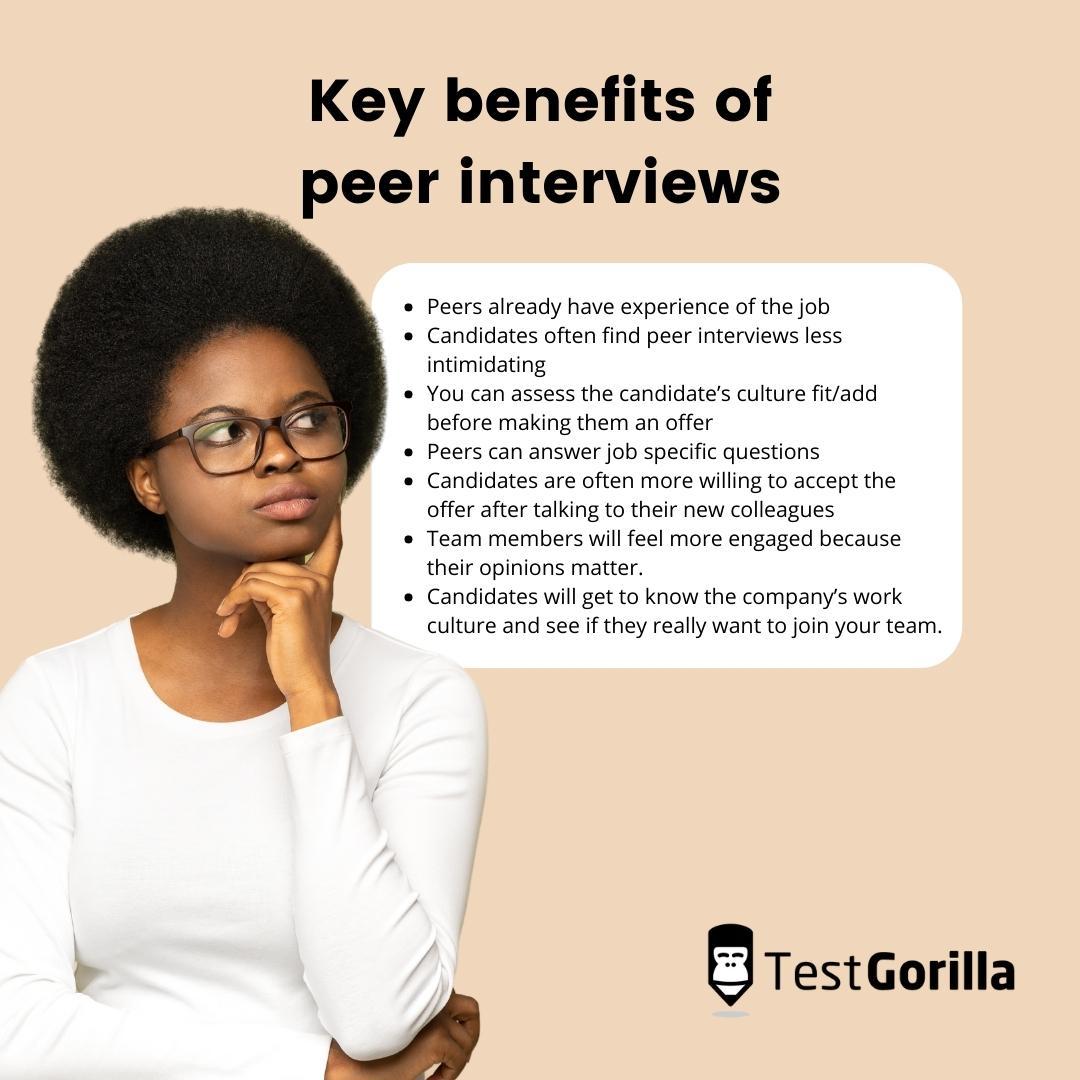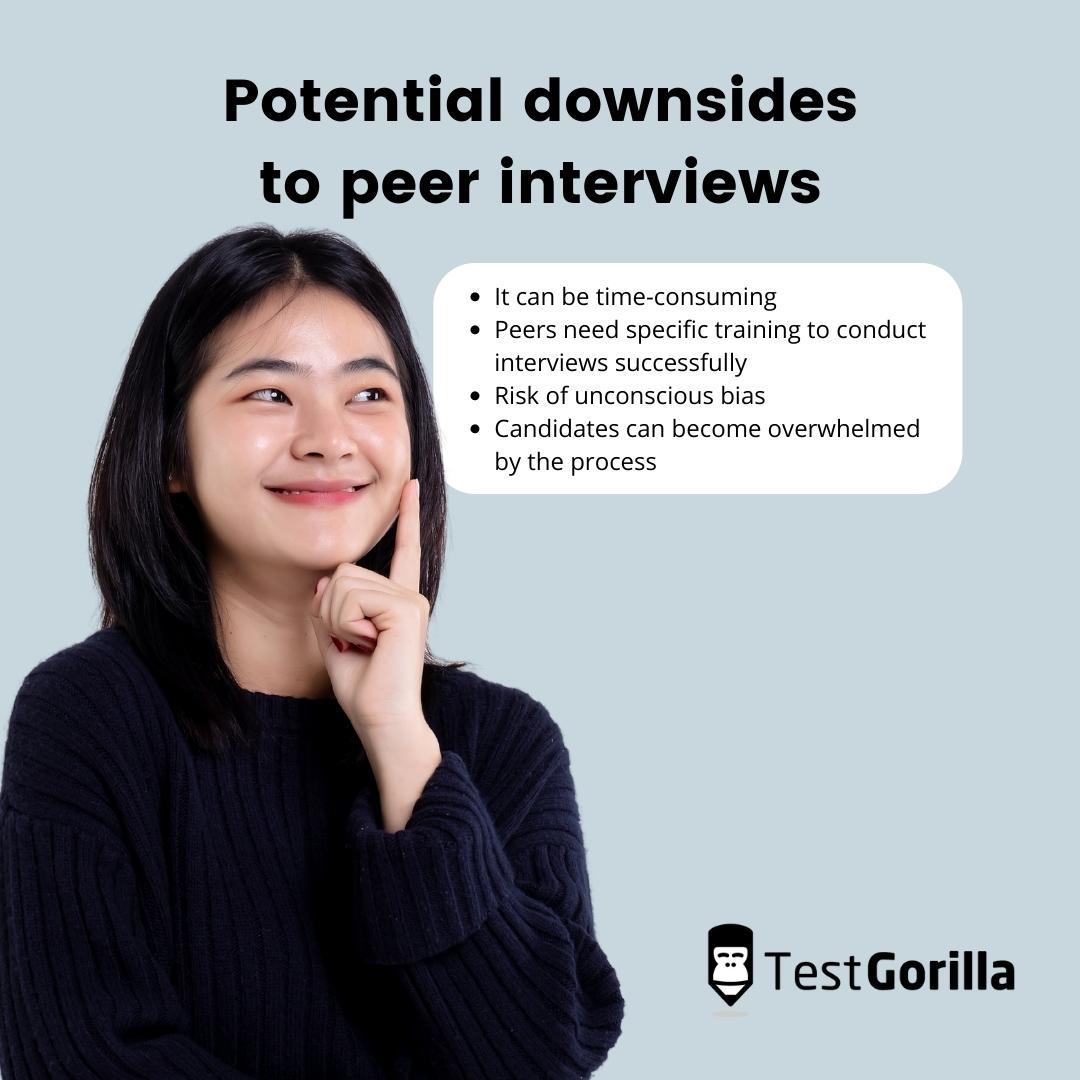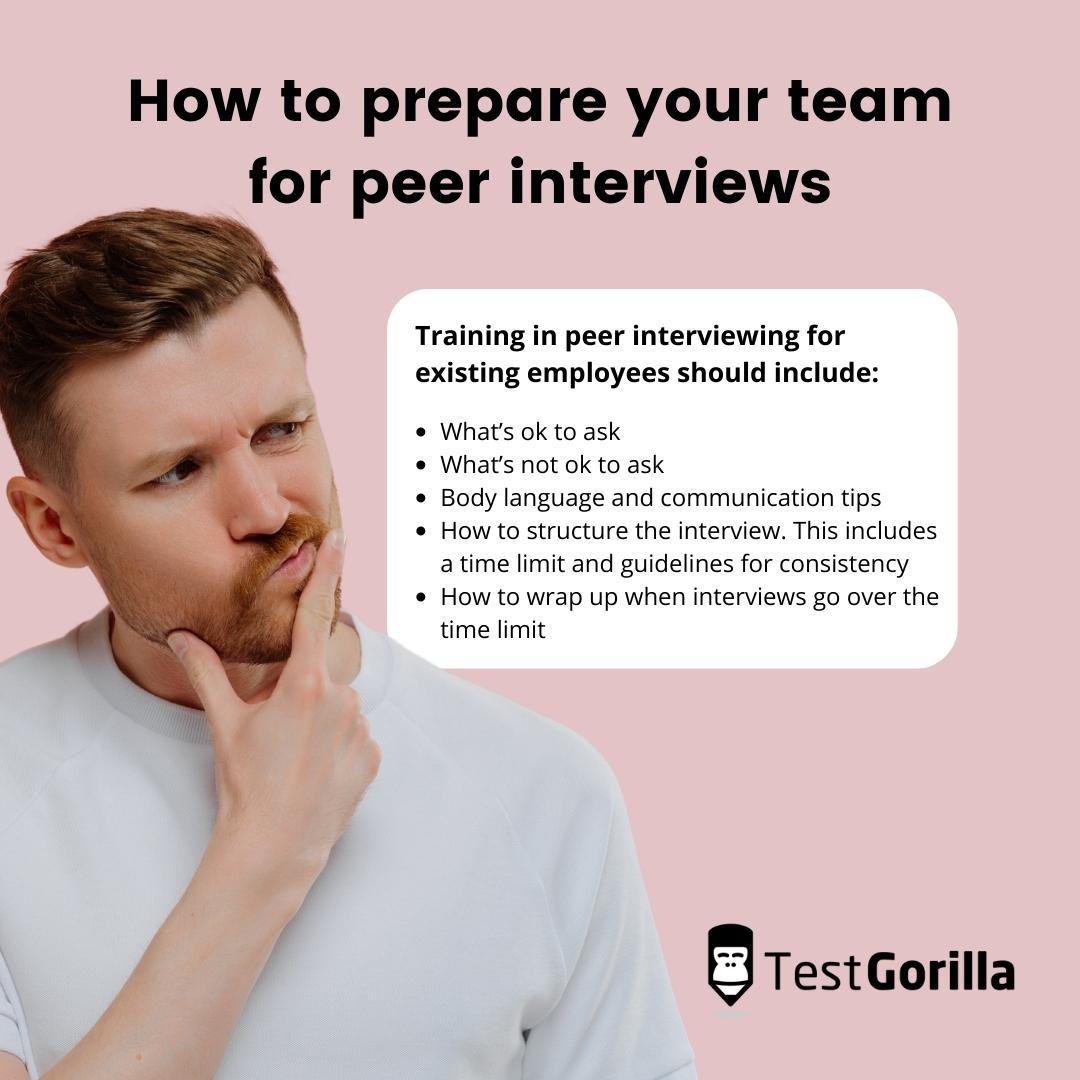The ultimate guide to peer interviews for recruiters
Every company wants to hire the best candidates out there to improve productivity, and it’s the hiring manager’s job to find top talent.
Although there are many strategies to find new hires, like advertising open positions on social media and using a referral program, the face-to-face interview remains the top determiner of the quality of hire.
When you interview someone face-to-face, you can genuinely get to know the candidate.
You can find out if they will be a good fit for the job you’re offering, regardless of how well they performed in their pre-employment tests and phone interviews.
However, although a hiring manager will have overall knowledge of the position your company is offering, they might struggle to “sell” every work-related aspect of the job to the candidate. After all, as a hiring manager you’re not only trying to find the best candidate, but to attract and eventually get them onboard, too.
In that sense, someone already working in the position will be better equipped to explain in detail what the job entails. This is called a peer interview, and it should be a tool in your arsenal of hiring techniques to use whenever needed.
Peer interviews can enhance the overall hiring process and might sway a candidate to join your organization if they feel welcomed by a team member of the same level in the hierarchy and not only by higher management. Therefore, peer interviews are definitely worth incorporating in the future.
This article will go over what a peer interview is, what its benefits and potential downsides are, when you should incorporate one, and what steps to take when designing peer interviews.
Table of contents
- What is a peer interview?
- What are the benefits of peer interviews?
- What are the potential downsides of peer interviews?
- At what stage of the recruitment process should you use peer interviews?
- How to do peer interviews the right way: a step-by-step guide
- Sample peer interview questions
- Peer interviews can be an invaluable tool for recruiters when done the right way
What is a peer interview?
A peer interview is a recruitment strategy that aims to have team members conduct a candidate interview and pass on their thoughts to the hiring manager.
Usually, to avoid judgment bias, the peer interview will be done by a panel of team members (no more than three) rather than just one person.
The team members who conduct the interview will either hold the same position as the role the candidate is applying for or would have been in that position before.
Peer interviews are useful for small and large organizations alike. Small companies with 10 employees or fewer will find this type of interview useful because it is a great way to find if the candidate is a culture add from the start.
In large companies, peer interviews are particularly useful since team members can aid the hiring manager in making a final decision based on the interview.
What are the benefits of peer interviews?
Peer interviews have various benefits that can truly enhance your hiring strategy.
Here is a rundown of the seven benefits you can expect when including peer interviews as a hiring technique:
1. Peers will have a hands-on experience of the job.
Naturally, the hiring manager will know what position they are recruiting for. But if they have never done the job themselves, they might lack some insights that will prove useful to sell the role to candidates during the interview.
Peers with experience in the position, on the other hand, can give the potential hire detailed information about what to expect if they get the job, and answer any questions candidates might have. Since peers experience the job every day, they can acknowledge positive and negative aspects of the role.
Their word will be more convincing for the candidate, especially when it is backed by stories and anecdotes from the workplace. This way, candidates can actually hear what happens on a daily basis and make a better assessment of what they are getting themselves into.
2. Peer interviews will ease the candidate.
Seeing friendly faces who could soon be your workmates can ease a candidate’s nerves during a face-to-face interview.
Having to talk to a person in charge or even the CEO of a company can be nerve-wracking and a candidate might not show themselves in the best light. Talking to peers will make them feel at ease – they can be themselves, which is ultimately how they will behave once they start the job.
This is an important part of the process because you want to see candidates who can be themselves and not the polished version they usually perform during an interview.
3. You can assess the candidate’s culture fit/add before making them an offer.
Peer interviews can help you gauge whether a candidate is a good culture fit/add for your company. This includes the individual’s values, needs, concerns, and work styles.
By talking to their peers, a candidate can open up about their own views of the world and how they approach a job.
If their values align with those of their team and the organization as a whole, their efficiency and productivity will be higher than someone completely unaligned with what your company is doing.
4. Peers can answer job specific questions.
In large organizations, hiring managers have an overview of what everyone is doing. However, when it comes to team and job specifics, they are not the right people to talk to.
Peers will have a much better understanding of what programs and databases your company is using, how things are done and why, and can give specific examples if the candidate has questions.
5. Candidates will be more willing to accept the offer after talking to their new colleagues.
Once candidates have a chat with potential new colleagues during the peer interview stage, they will be more willing to accept the offer because they will already feel welcomed by their new team.
Knowing who you’ll be working with and that you can ask for help when starting a new position is a great advantage for a potential hire, especially if they are more introverted.
6. Team members will feel more engaged because their opinions matter.
An added bonus to the peer interviews is that current team members will feel more engaged with the direction of your company. Including them in the hiring process and actually taking their opinions into account will serve to boost morale and communicate to new hires an open doors policy.
7. Candidates will get to know the company’s work culture and see if they really want to join your team.
Finally, by getting to know their new team and spending some time with them – maybe even a whole day – a candidate can make up their mind quicker if they want to start working for your company.
Hiring people who are unsure if they want to join but do it anyway can hurt their productivity and your company’s turnover rates in the long run.
The best insights on HR and recruitment, delivered to your inbox.
Biweekly updates. No spam. Unsubscribe any time.
What are the potential downsides of peer interviews?
As with all good things, there are of course some downsides of peer interviews. These can be summarized as follows:
1. It can be time consuming.
The hiring process is usually a lengthy one – alongside going through CVs, pre-employment tests, and face-to-face interviews with the hiring manager, adding one more step can prove time consuming.
You need to schedule and organize interviews with candidates when team members can attend, which will disrupt their work process. In addition, you need to prepare team members for the interview and schedule meetings afterwards to gain their feedback.
All of this takes time and resources, which could be allocated to more productive things.
2. Peers need to know how to conduct the interviews and need to be trained.
As mentioned in the point above, peers need to be trained to ask the right questions and to know how much information they can divulge to candidates so they don’t unintentionally give out any company secrets.
The last thing you want is for a candidate to spread information that should not have been shared with them across the internet. Overall, peer interviews add additional work to you as the hiring manager and your team conducting the interviews.
3. There is great potential for bias.
With peer interviews, there is a significant chance of unconscious bias creeping into the hiring process. If a team member connects with a candidate from the start, they might report in their favor, even if they are not the right person for the job.
This is why you want to have several people doing the interviews, to minimize this bias as much as possible.
4. The candidate might be overwhelmed by the entire process.
Going through many pre-assessments and interviews can overwhelm a candidate to a point they feel scared and leave the recruitment process. In addition, including too many peers in the interviews might be seen as excessive by the candidate.
With these points in mind, you need to be careful how you plan your peer interviews in order to gain all the benefits and try to remove negative aspects as much as possible.
At what stage of the recruitment process should you use peer interviews?
As we have seen, peer interviews have many advantages that can help you land that top employee, even when you take into account the disadvantages.
At this point you might be wondering when exactly you should implement the peer interviews.
They should come after the skills assessments, since you first want to test applicants’ knowledge and skills and disqualify those who don’t meet your criteria.
Interviews – including peer interviews – should take place once you have filtered out all the unsuitable candidates.
Shortlist the candidates you would like to interview, so your team doesn’t waste time interviewing a long list of applicants.
Overall, here’s a rundown of what the recruitment process should look like:
1. Define the job’s responsibilities and requirements.
To begin with, you need to define exactly what the job opening entails, as well as what the responsibilities and prerequisites are. You need to specify the duties of the position, the salary, whether it’s remote work or not, and how many hours per week would be expected.
2. Post a job ad and collect applications.
Once you’ve written the job description and have a better idea of what you’re looking for, it’s time to post the job ad and start collecting applications.
This can be done via your website, job boards, social media like Facebook and LinkedIn, and through word of mouth via a referral program. There are plenty of ways to attract qualified candidates – you just need to look for them.
3. Design a skills assessment.
While your applications are coming in, you need to think about which tests you want to include to verify candidates’ abilities to do the job. The best way to do this is with TestGorilla’s library of tests, which can help you design an assessment that best suits your industry and the position you have on offer.
You can select up to five crucial skills that you wish to evaluate based on the requirements of the job and create a customized skills assessment.
Best practices shows that implementing a mix of tests – one or two for cognitive abilities and personality and culture, in addition to role specific tests, will give you the best results.
4. Administer the skills assessment to all applicants.
After you have decided which tests to use and you have stopped the application process, it is time to assess your applicants. In order to get unbiased results, you should give everyone equal time and opportunity to finish each test.
You don’t need to worry about cheating – every test has anti-cheating software installed in them, so you will be notified if anyone tries something funny.
5. Compare results.
Once everyone completes their assessments it is time to compare and analyze their results and see who truly shined.
The system will automatically rank the best candidates on top, and you can see individual answers to every question if you want to see how a specific candidate answered a problem.
Using skills assessments can further filter out candidates so you invite only the best ones to the interview phase.
6. Shortlist your best applicants and invite them to an interview.
Having analyzed their results, you can shortlist your best applicants and invite them over for an interview. You can do this over the phone initially and afterwards send them an email detailing where to go, what to bring with them (if necessary), and even what to wear.
Providing as many details as you can will help your shortlisted candidates relax so you see them in the best light when they come in for the interview.
7. Conduct interviews.
The interview process can be done all at once or in several rounds, depending on how much time and resources you can spare. This is the point at which you can use peer interviews.
You can either first have an interview with the candidate by yourself and then proceed to the peer interview, or simply allow your team members to conduct the interview and make the judgment for you.
Regardless, the peer interviews should come at the end of the recruitment process so you don’t waste your team’s time and disrupt their work too much.
It is best to conduct your interviews all in the same day or over the course of a week at most – you don’t want to stretch the interviewing process for too long, overwhelming the candidates and yourself.
8. Discuss results with your hiring team.
When you’ve conducted your peer interviews it is time to discuss the results with your team. Ask them to write some feedback over email and then schedule a meeting with them to review their answers.
Ask them what they thought about each candidate and whether they think they would be a good fit for the team – after all, they are the ones who will be working with the new hire, so they should know best.
9. Make a hiring decision.
After you have gathered all the relevant information – from the pre-employment tests, the interviews, and the opinion of your team members – it is time to make a hiring decision.
Go through the candidates’ CVs one more time and match what they said with their overall results. Also, take into account what your employees have told you about the candidate after the peer interview.
But remember – it’s not your employees’ decision but yours. You are the hiring manager after all.
10. Extend an offer to your best applicant.
Finally, once you’ve made up your mind, you can extend an offer to your best applicant, or applicants if you are batch hiring. Give them a call to tell them the good news or schedule a final meeting with them.
This is also a good time to renegotiate their remuneration and any other perks to attract the applicant if they are top talent and you don’t want to lose them.
How to do peer interviews the right way: a step-by-step guide
In the previous section, we explained what your overall recruitment process should look like.
In this section, we’ll guide you through the specifics of conducting peer interviews and give you all the details you need to prepare.
1. Select the right interviewers
The first stage of conducting peer interviews is to select the right team members who are going to conduct the interviews.
You don’t need more than three employees at the interviews, but you need to select the right ones. You want employees who are happy, engaged, and who perform well.
Having team members from different backgrounds will bring in different perspectives during the peer interview, and you will receive an array of opinions on your prospective hire.
Obviously, you don’t want to bring in unhappy or disillusioned employees because they might work against you or scare the candidate away.
2. Provide training for your interviewers
A crucial step in your peer interview process is to train and prepare the employees who will conduct the interviews.
Use all your experience to relay basic and important information about the process, like making sure to be on time for the interview, introducing themselves, and which questions they could ask and which ones they should stay away from.
Sensitive information like age, ethnicity, marital status, and sexual orientation should not be inquired about.
You need to explain to them what to look for in answers, behavior, and the outlook of the candidate. These are important aspects to take into account, and as the hiring manager you will want to hear how the candidate did.
Remember, your employees might never have done interviews themselves, so no matter how redundant some information might seem, it is best to go over it with them so you receive the best results at the end.
3. Prepare the interview’s structure
Another important step is to structure and standardize the interview process.
A good idea here will be to use structured interviews (as opposed to unstructured ones), as they limit bias and the opportunity for small talk, which could defeat the purpose of the peer interview altogether.
Structured interviews can be designed beforehand and will include a set of questions that can be easily assessed during the evaluation process. They will focus on a candidate’s competencies for the role – you can use behavioral and situational questions that can tell a lot about a candidate’s previous experience and how they react to certain dilemmas and scenarios.
Unstructured interviews, on the other hand, have not been prepared beforehand and almost “everything” is allowed during the interview. Such interviews can be hard to assess and you won’t have a standardized way of evaluating a candidate based on their answers.
Of course, you can always do a mix of both, but keeping more structured questions that have been greenlighted by you is usually more appropriate.
4. Establish a rating process
The evaluation process is an important step during peer interviews.
Team members should take notes and keep a score of all the questions that were asked. Having a standardized evaluation system (for example by using scoring sheets) will make the process easier once the interview is over.
You can devise criteria based on your previous hiring experience and industry standards. Explain to the team members conducting the interviews what they should be looking for, and then compare what they have written down to what you know about the candidate.
It is important to select the criteria beforehand, however, to avoid any bias once you start evaluating answers.
5. Perform the interview
Once you and your team are ready with all the prerequisites, you can move on to the interview.
You should schedule the peer interviews on the same day or over a week if there are several candidates. Team members should allow for extra time to conduct the interviews, and if they have any pressing work projects they should pass them along to other colleagues.
It might sound redundant, but you want to tell your interviewers in advance that they will need to take part. If you come in on the day and tell them you need their help with the recruitment process, you will not get the results you’re looking for.
Bear in mind that, if you have pre-assessment tests as well as phone and face-to-face interviews with a hiring manager, the peer interviews should come last. They should be your final test to see if a candidate is right for the job.
In addition, you want to create a pleasant setting for the interviews. Ensure everyone is briefed, all your equipment is working, and you have a printout of all the important information about the candidate. You can offer refreshments to everyone to help ease any interviewing tension, both for the applicant and the interviewers (especially if they’ve never done one before).
Once you know everything is in order, leave your team and the potential hire to do the interview. You don’t want to take part as that will defeat the purpose of the exercise.
6. Discuss the results with the interviewing team
Finally, once the interview is over, it is time to discuss the results with your team.
Ask them to write their impressions as soon as the candidate leaves the interview. Afterward, they should write a report and send it to you via email.
Once you check the reports and familiarize yourself with how the interview went, you can schedule a meeting with the interviewing team and discuss the results in person.
Collect the impressions of each team member, asking them why they liked or disliked the applicant based on the answers during the interview. Here, you’re not looking so much for personal preferences but for opinions based on the evaluation criteria you developed beforehand.
Once you have enough answers, you will need time to decide which candidate will ultimately receive a job offer.
The final decision is yours, but make sure you tell your team members why you went with one candidate and not another. Giving feedback is important and will make your employees feel like their opinions matter, even if their choice wasn’t successful.
Sample peer interview questions
If you’re struggling to think of questions for the peer interview, don’t worry: We have compiled a list of sample questions you can use or modify depending on your needs. These are general questions that your team members can ask.
The focus here is to understand whether the applicant will be a good fit for your team, so the questions need to be adapted to the specifics of your organization and needs.
Again, you want to go over the questions with your team members prior to the interview and highlight any areas that shouldn’t be discussed or mentioned to avoid bias, unprofessionalism, or even any legal action against your organization.
1. Can you tell us about yourself/describe yourself?
As an opening question, “tell us about yourself” is a great icebreaker. Candidates can relay some information about themselves that peers can use to move the conversation forward.
Although this is still a recruitment interview, it has a more informal setting in which team members can chat with their potential new colleague. In this sense, it is a good idea for the team members to say something about themselves to ease the applicant and “loosen their tongue.”
However, apart from any personal anecdotes, the answers peers should be looking for is for the candidate to share their recent professional work and any related skills they have relevant to the job opening.
A good answer will also include how the candidate’s previous experience will enhance the work in your organization and what they plan to bring to the table if they get the job.
2. What exactly did you do at your previous job?
Similar to the above question, the purpose here is to understand the exact nature of the candidate’s previous work experience. Peers want to know how closely connected the applicant is to the job opening.
Their previous experience will highlight potential skills gaps that the candidate may have and it will signal to the peers what kind of training will be needed and who should administer it.
Additional questions from peers at this point might be to ask the candidate to give specific examples of parts of their job – what data and project management software they used, any skills that they used on a daily basis, etc.
3. Could you describe a situation in which you had to adapt quickly to change?
The aim of this question is to understand if the candidate is flexible enough to help their team in a time of crisis when something needs to be done quickly and efficiently.
Peers want to know that they can rely on their team members for anything, so a good answer here may include examples in which the candidate had to change their daily work pattern to accommodate someone’s needs or simply to help them out with a task or deadline.
It’s important to note that you don’t want to hire someone who’s a pushover because everyone will try to use them at work. So the candidate needs to affirm that they can be flexible, but not at the cost of not being able to do their own job – that would risk burn out, which ultimately affects your team and your organization as a whole.
4. What was your relationship with your previous team?
Teams need to be able to work together on anything, and people who are positive towards the whole work process are ideal candidates.
Applicants who cannot provide evidence that they are a team player, especially when they are being interviewed by their peers, will not be suited for teamwork.
This could be a deal breaker, even if the candidate excels in every other aspect of the recruitment process.
Having a strong relationship with your team is important. Even if team members have different work styles, they should still be able to work together. Candidates who can demonstrate this point of view are the ones you should be looking for.
5. Did you have many opportunities to work with your previous team?
Another important team question.
The idea here is to understand whether the candidate had many opportunities to work in a team in the past and whether they initiated joint projects. Having proactive team members will aid the work process.
Having a strong team is key for an organization to thrive and achieve better results.
6. What would you do if you came into conflict with a colleague over a project you’re working on together?
Conflict resolution is highly valued among teams.
Tensions can and will arise between team members, so candidates who can remain cool at all times would be valuable additions. Any conflicts can and should be dealt with through calm discussions, and if necessary the HR team can intervene.
Here, peers will want to hear how the applicant deals with difficult situations and how they approach certain topics. Are they open to discuss their needs and opinions or do they bottle them up and leave negative feelings to fester?
Candidates who cannot give a proper answer to this question may be a liability in the future.
7. What do you like to do for fun?
Finally, to close off the peer interview session, a “what do you do for fun?” question will show peers if they can connect with their future colleague outside of work.
A good relationship outside of work will be indicative of a collaborative and efficient work process and will be an advantage for your team in the long run.
Of course, the applicant shouldn’t go off script too much here; peers should still look for a professional answer that doesn’t include too many details of what the candidate does on a weekend with their family.
Other aspects of the peer interview to consider
Alternatively to the questions above, you might want to do a technical peer interview. In this case, you might want to leave your employees to come up with the questions as they are probably more proficient on the topic than you.
Apart from the actual questions, your team needs to avoid certain topics as mentioned above. These would include questions that relate to:
Gender and sex, and sexual orientation
Religious and political views
Ethnicity
Marital status
Disabilities
Any of these questions should be left to you as the hiring manager, and they should be asked at your discretion only if they are applicable in any way to the position.
Be careful, as you don’t want the threat of lawsuits as a result of asking questions of a sensitive nature that have nothing to do with the job role.
Peer interviews can be an invaluable tool for recruiters when done the right way
Peer interviews are a recruitment strategy with many benefits for recruiters if done properly. They can be an invaluable tool in your toolbox of hiring techniques.
Using team members who have been in the position, or are currently in the role, can yield valuable insights into the suitability of a candidate. Team members will have a better understanding of the work process and can ask relevant questions to applicants.
In this way, you can quickly understand if your potential hire is a good cultural fit for your team or can bring you increased productivity and higher returns on investment.
If you have never done peer interviews before, now is the time to consider them and reap the benefits. It also makes sense to consider skills testing before conducting peer interviews.
With TestGorilla’s test library, you’ll find the recruitment process to be simpler, faster, and much more effective. Get started for free today and start making better hiring decisions, faster and bias-free.
You've scrolled this far
Why not try TestGorilla for free, and see what happens when you put skills first.


